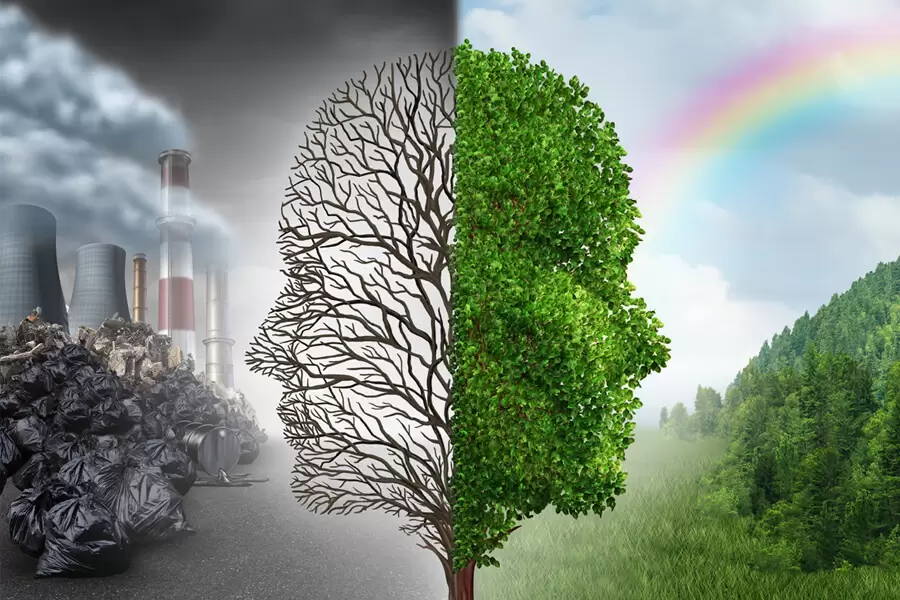The importance of using biodegradable containers in protecting the environment
Biodegradable and degradable plastics play a positive role in environmental protection due to their ability to decompose in nature and reduce environmental pollution related to plastic.
With increasing demand for "green" products, biodegradable and compostable plastics are becoming a common option on store shelves. Given the fact that a dump truck's worth of plastic waste enters our oceans every minute, it's no surprise that people are looking to use their purchasing power in ways that are likely to leave a smaller footprint.
As the production of biodegradable plastics increases from 1.5 million tons to 5.3 million tons in the coming years, it is important to understand exactly how these materials contribute to the environment.
Let's explore some frequently asked questions that can help clarify the concept of biodegradable and compostable plastic for the environment:
What is the difference between biodegradable plastic, bioplastic and compostable plastic?
There are some significant differences between biodegradable plastic, bioplastic and compostable plastic:
Biodegradable plastic refers to any plastic that can be broken down naturally by living organisms, regardless of the original material from which it is derived. Plastic can be biodegradable without being considered bioplastic or "compostable plastic".
Bioplastic is a term that describes any plastic made from natural, renewable raw materials. While some bioplastics are biodegradable or compostable, many are non-biodegradable, meaning they won't break down even if they're made from natural materials.
Compostable plastic is a term that describes plastics that require specific conditions to break down, rather than the more complex conditions of biodegradable plastics. While biodegradable plastics can break down in a more natural environment, compostable plastics usually require industrial composting facilities.
How long does it take for biodegradable plastics to break down?
In general, biodegradable plastics take between three and six months to decompose when exposed to oxygen or light. Conventional plastics can take up to 1,000 years to reach the same levels of degradation.
Recently, new methods have been developed to speed up the decomposition of plastic containers. Such as the use of ultraviolet rays or various enzymes that are activated by water and light and cause the decomposition of plastic containers.
What are the advantages of biodegradable plastic?
Biodegradable plastic's ability to break down means it has several advantages over traditional plastics:
Reduces waste sent to landfills or incinerators. When you throw traditional plastic in the trash, it has a negative environmental impact because it can end up in landfills, where it can potentially sit for hundreds of years, or incinerators, where it is burned and releases harmful chemicals into the natural environment. Conversely, biodegradable plastic has an environmental advantage: it breaks down in a landfill and does not need to be incinerated.
Less energy is used for production. Biodegradable plastics often use less energy to produce than traditional plastics, meaning they use less fossil fuels and produce fewer greenhouse gases that harm the planet.
It releases less harmful substances during decomposition. While traditional plastics can introduce toxic chemicals into the environment, good biodegradable plastics should break down with few harmful byproducts. Instead, biodegradable plastics release a combination of water, carbon dioxide, and biomass (often simply leftover plant matter).
How do they contribute to helping the environment and reducing plastic waste pollution?
Biodegradable and compostable plastic alone cannot solve the plastic pollution crisis. Instead, there are many levers that need to be pulled to reduce and reuse plastic and shift to a circular economy. In fact, we cannot even rely on the assumption that these materials will not harm the environment if they become waste.
All plastics—including biodegradable and compostable types—must be collected and paired with appropriate recovery systems, so that materials stay in the loop and out of nature.
However, for certain applications, compostable and biodegradable plastic can play a useful role in reducing waste. Compostable takeout containers are a good example, as they can compost leftover food right next to the container itself.
Additionally, biodegradable and compostable plastics are often made from biological sources—such as seaweed, sugar beets, or other plants—rather than fossil fuels. In this case, and if responsibly sourced, these materials can provide environmental benefits.
Compostable materials can be composted in the trash at your home or sent to an industrial composting facility, depending on what the particular item is designed for. If you have a home compost pile, be sure to put only "home compost" approved materials into it.
Can I put biodegradable and compostable plastic in my home compost bin?
You can compost some materials at home. The rest are designed for an industrial facility. If you have a home compost pile, sure

